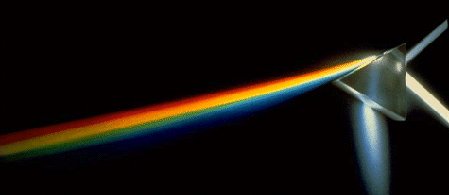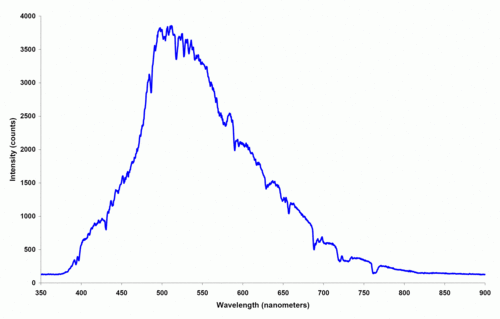|
SUNSHINE
|
|||
|
HOME | BIOLOGY | FILMS | GEOGRAPHY | HISTORY | INDEX | MUSIC | SOLAR BOATS | SPORT | SPONSORS |
|||
|
Sunlight in the broad sense is the total spectrum of electromagnetic radiation given off by the Sun. On Earth, sunlight is filtered by the atmosphere, and the solar radiation is obvious as daylight when the Sun is above the horizon. This is usually during the hours known as day. Near the poles in summer, sunlight also occurs during the hours known as night and in the winter at the poles sunlight may not occur at any time. When the direct radiation is not blocked by clouds, it is experienced as sunshine, a combination of bright light and heat. Radiant heat directly produced by the radiation of the sun is different from the increase in atmospheric temperature due to the radiative heating of the atmosphere by the sun's radiation.
Sunlight - the source of Life on Earth
The World Meteorological Organization defines sunshine as direct irradiance from the Sun measured on the ground of at least 120 W·m−2. Direct sunlight gives about 93 lumens of illumination per watt of electromagnetic power, including infrared, visible, and ultra-violet. This compares with the best fluorescent lights. The sun's nuclear energy source was discovered by Hans Bethe.
Life on Earth
The existence of nearly all life on earth is fueled by light from the sun. Plants use the energy of sunlight to turn air into simple sugars—a process known as photosynthesis. These sugars are then used as the building blocks which allow the plant to grow.
Animals use light from the sun indirectly, by either eating plants or eating other animals that have eaten plants. The sugars produced by the plant are then broken down, releasing stored solar energy, and giving the animal the energy required for motion. This process is known as glycolysis.
In prehistory, humans began to further extend this process by putting plant and animal materials to other uses. They used animal skins for warmth, for example, or wooden weapons to hunt. These skills allowed humans to harvest more of the sunlight than was possible through glycolysis alone, and human population began to grow.
During the Neolithic Revolution, the domestication of plants and animals further increased human access to solar energy. Fields devoted to crops were enriched by inedible plant matter, providing sugars and nutrients for future harvests. Animals which had previously only provided humans with meat and tools once they were killed were now used for labour throughout their lives, fueled by grasses inedible to humans.
The more recent discoveries of coal, petroleum and natural gas are modern extensions of this trend. Both materials are the remnants of ancient plant matter, formed using energy from sunlight and then trapped within the earth for millions of years. Because the stored energy in these fossil fuels was provided by the sun millions of years ago, they have allowed modern humans to use more solar energy each year than the sun provides. As the amount of fossil fuel is finite, this cannot continue indefinitely, and various theories exist as to what will follow this stage of human civilisation (e.g. alternative fuels, Malthusian catastrophe, new urbanism, peak oil).
Cultural aspects
Many people find direct sunlight to be too bright for comfort, especially when reading from white paper upon which the sun is directly shining. Indeed, looking directly at the sun can cause permanent vision damage. To compensate for the brightness of sunlight, many people wear sunglasses. Cars, many helmets and caps are equipped with visors to block the sun from direct vision when the sun is at a low angle.
In colder countries many people prefer sunnier days and often avoid the shade. In hotter countries the converse is true; during the midday hours many people prefer to stay inside to remain cool. If they do go outside, they seek shade which may be provided by trees, parasols, and so on.
Sunshine is often blocked from entering buildings through the use of window blinds, awnings, shutters or curtains.
Sunbathing is popular for the cosmetic benefits of a sun tan, although there are also risks of cellular damage to the skin
Sunbathing
Sunbathing is a popular leisure activity in which a person sits or lies in direct sunshine. People often sunbathe in comfortable places where there is ample sunlight. Some common places for sunbathing include the beach, open air swimming pools, the park, the garden, and pavement (sidewalk) cafés. Sunbathers typically wear limited amounts of clothing (such as swimsuits), or go topfree or simply go nude.
An alternative some use to sunbathing is to use a sunbed that generates ultraviolet light and can be used indoors regardless of outdoor weather conditions and amount of sun light.
For many people with pale or brownish skin, an additional or primary purpose for sunbathing is to darken one's skin color (get a sun tan) as this is considered in some cultures to be beautiful, associated with outdoor activity, vacations or holidays, and health. Indeed, the body produces vitamin D from sunlight (specifically from the UVB band of ultraviolet light), and excessive seclusion from the sun can lead to deficiency. An additional reason that some people prefer nude sunbathing is that an "all-over" or "even" tan can be obtained.
Skin tanning is achieved by an increase in the dark pigment inside skin cells called melanocytes and it is actually an automatic response mechanism of the body to excessive exposure to ultraviolet radiation from the sun or from artificial sunlamps. Thus, the tan gradually disappears with time, when one is no longer exposed to these sources. The skin of darker-skinned people may represent an evolutionary advantage developed time ago in races living in tropical areas, such as Africa.
Adverse effects on health
On this last point it is important to note that excessive sunlight exposure has been linked to all types of skin cancer, which are caused by the ultraviolet part of radiation contained in sunlight and sunlamps. Sunburns are mild to severe inflammation effects to the skin and can be avoided by using a proper sunscreen cream or lotion or by gradually building up melanocytes over days and weeks of increasing exposure. Another detrimental effect of UV exposure is accelerated skin aging (also called skin photodamage), which produces a rather ugly and difficult to treat cosmetic effect. The decrease in the atmosphere's ozone layer in the last decades is increasing the incidence of such health hazards and extra precautions should be taken by people who are exposed daily to strong sunlight.
A lack of sunlight, on the other hand, is considered one of the primary causes of seasonal affective disorder, a serious form of the "winter blues". SAD occurrence is noticed more prevalently the further away from the tropics the sample is taken, and most of the treatments (other than prescription drugs) involve replicating sunlight. This replication is done using lamps tuned to specific wavelengths of light or full-spectrum bulbs.
There are two further beneficial effects of sunlight. Firstly it upregulates the manufacture of vitamin D in humans when sunlight is incident upon skin surfaces. Secondly, the use of sunlight in lieu of artificial light to illuminate building interiors avoids certain adverse health effects of over-illumination by electric lights as well as promoting energy conservation.
Spectrum of blue sky clearly showing absorption bands (in the red and near infrared region) of water and oxygen in the atmosphere
A girl who soaks up the sun is a sunshine girl. A sunshine girl is someone who radiates the energy of life. That can take many forms: love, laughter, style, rhythm, caring, voice, health, looks ............................. In other words, they bring sunshine into the lives of others. In particular, the Sunshine Girls group known as 1824 make music to brighten your day................. Why don't you give them a listen.
Reference
BMG | CBS COLUMBIA | CHRYSALIS | EMI | MOTOWN | RCA | SONY
UNIVERSAL MUSIC GROUP | VIRGIN MUSIC GROUP
WARNER MUSIC GROUP (AOL TIME WARNER)
New energy drinks for adventure capitalists
Solar Red | Solar Crush | Solar Cola | Solar Citrus | Solar Spice
|
|||
|
This
website
is Copyright © 1999 & 2007 NJK. The bird The name '1824' is a trade mark of Solar Cola Ltd. All rights reserved. Max Energy Limited is an educational charity. |
|||
|
AUTOMOTIVE | BLUEBIRD | ELECTRIC CARS | ELECTRIC CYCLES | SOLAR CARS |



